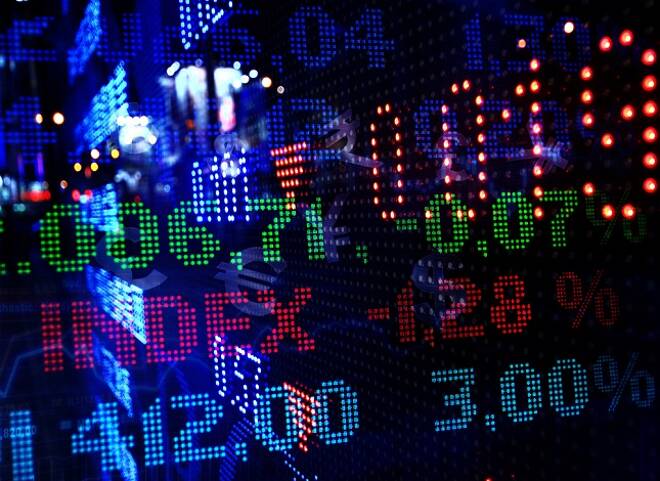Advertisement
Advertisement
CDC In A Heightened State Of Readiness
By:
Risk sentiment remains on the offs after guidance from the CDC.
Markets
Risk sentiment remains on the offs after guidance from the CDC, saying they are preparing as if the coronavirus is the next epidemic, which is similar to the warnings on the street in ASEAN countries that are closer to the outbreak epicenter. But I view this through a more positive lens that the world is in a heightened state of preparedness to better ringfence this nasty and stealthy flu.
But for the risk markets, the mere mention of the word pandemic these days raises the fear factor higher by multiples.
There are two separate but not mutually inconsistent dynamics evolving around the coronavirus: panic/fear and the hit to the real economy.
The market is still, for the most part, in the fear mode, but as traders consume more economic data fall out, the hit to the real economy should become more apparent. Then the market will get steered by data, not opinions, or the herd mentality.
Travel bans and other such containment measures should reduce the spread to other countries beyond China and therefore lessen the panic; at the same time, the global economic fall out to the real economy will be much more pronounced than the SARS outbreak in 2003 and should, therefore, linger longer.
The economic effects on the real economy are more eye-catching via commodity markets than anywhere else. But if you use global equity markets as your key risk barometer, you will think they are co-existing in non-parallel universes. At the same time, the ASEAN markets tank as the US market appears impervious to the knock-on effects of the heightened level of economic devastation to the world’s most prominent player in the global supply chain, China.
For now, US investors remain mostly upbeat as US ISM manufacturing data beat on both headlines while the throttle bending Philly Fed and Richmond Fed numbers occurred mainly in isolation and discounted by the weak Chicago PMI.
I’m not a very good stock picker, so I will defer my view on China today but leave you with this thought. Chinese authorities limit shares to 10% drops on the day. With more than half of the CSI 300 down 9.95% (or more) yesterday before a rebound set in, it seems too orchestrated for my liking.
Oil markets
Oil markets remain under duress following news yesterday that Chinese demand has fallen 30% or 3million /mbd because of the coronavirus, which paints an incredibly dire picture. And while we can take some solace that the fatality rates are below the SARS epidemic, but travel bans and quarantines affecting some 50 million people are significantly impacting consumer behavior.
The situation is so dire that even Russia supports the proposed emergency OPEC+ meeting.
However, China’s inventories are swelling as teapots run rates fall precipitously, adding to the global oversupply concerns as Brent crude oil front-month time-spread flips into contango for the first time since July 2019. But oil-price weakness in an oversupplied market only peaks when the whole curve goes contango. Suggesting we could see Brent contract follow WTI below $ 50 since the global economic fall out to the real economy will be much sharper than the SARS outbreak in 2003 and should, therefore, linger longer. At present, there is little hard data to support this view, but investors are proving very cautious.
Gold markets
Gold is trading a bit weaker as the risk-off move tentatively dissipates with relief that China market has reopened with a hefty backstop from the PBoC. Still, gold has much more room to outperform other traditional safe haven’s regardless of the current state of affairs, even if the virus spread peaks.
Travel bans and quarantines will eventually reduce the spread to other countries beyond China and therefore lessen the panic. Still, the real economic impact will be broader than that of the SARS outbreak in 2003 and will persist for longer, forcing ASEAN banks to cut interest rates. Still, the April FOMC meeting will capture any Fed reaction that emerges from a broader economic hit. And with the market moving to price in a Fed reactionary rate cut this spring, gold should remain well supported on dips gathering steam for a possible test of $ 1600 in the not so distant future.
Currency Markets
USD
With month-end rebalancing out of the way and with China back after a week-long holiday, the Euro is finding more support from EUR/Asia carry trade unwinds. But arguably, it has been a quiet start to the week.
But at some point, the currency markets will have no option but to turn to focus on the Sanders surge despite the school of thought that the higher the probability of Sanders becoming the Democrat Presidential candidate, the higher the likelihood of a Trump re-election. None the less, the head to head polling numbers is where the balance of USD risk will be so it could get bumpy.
The Ringgit
The coronavirus outbreak and the economic and trade uncertainties that it carries bring pressure on the local currencies none more so than the Ringgit due to Malaysia’s close trade ties with China. All this is happening on the back of evidence that the coronavirus outbreak is significantly impacting the global economy, with China, the worst-hit, local ASEAN currencies are predictably feeling the most pressure and local commodity exporters especially.
About the Author
Stephen Innescontributor
With more than 25 years of experience, Stephen Innes has a deep-seated knowledge of G10 and Asian currency markets as well as precious metal and oil markets.
Advertisement
